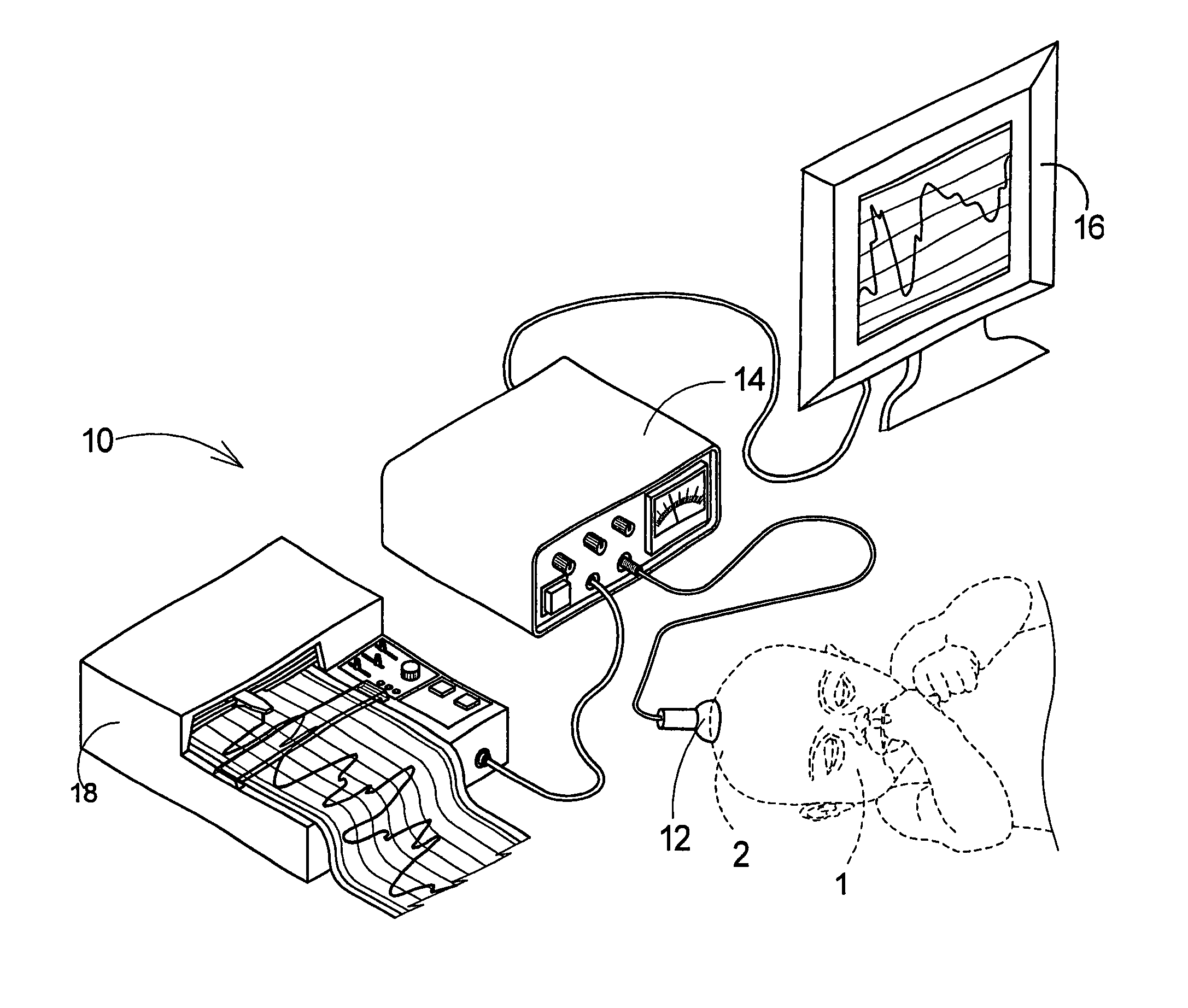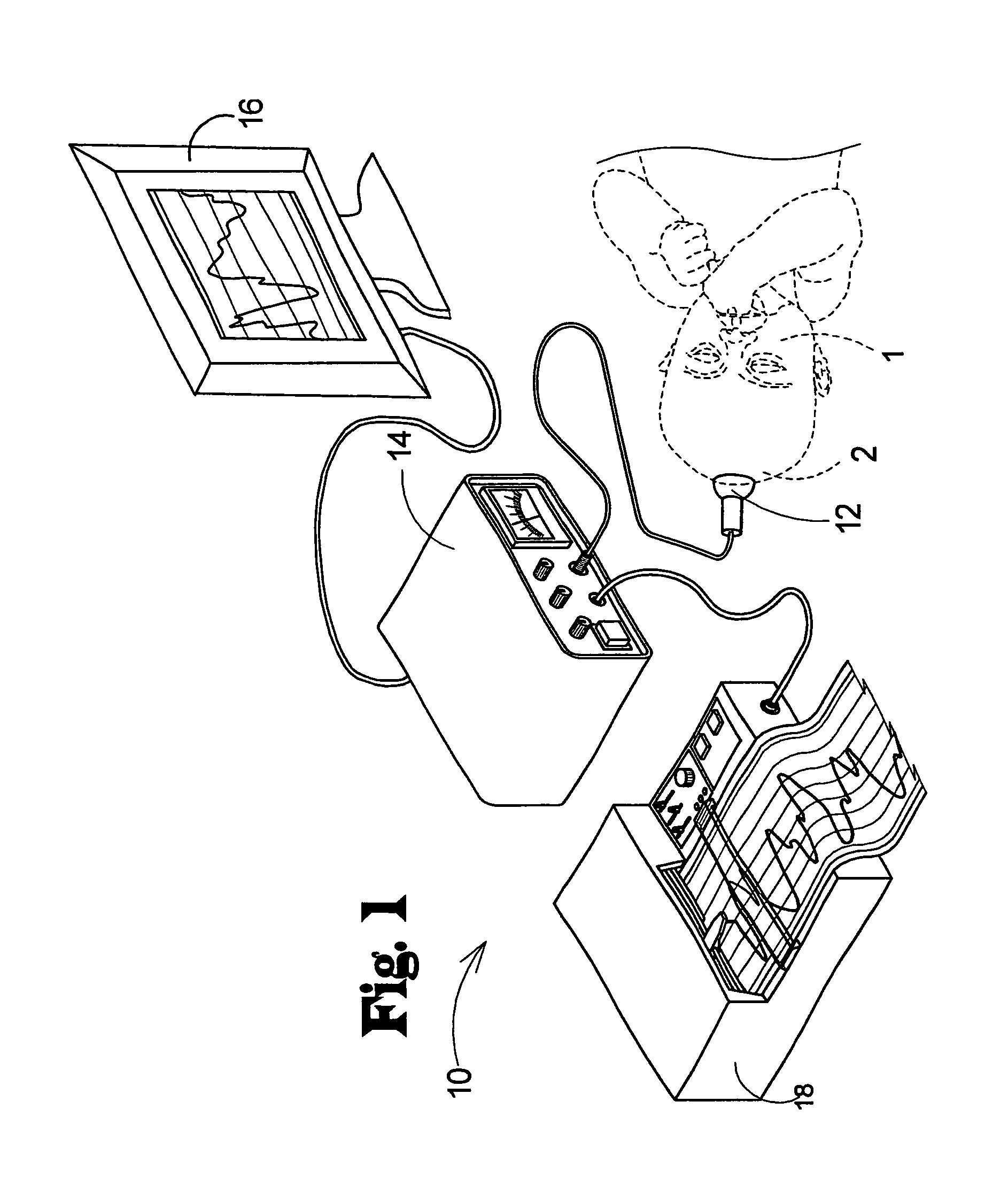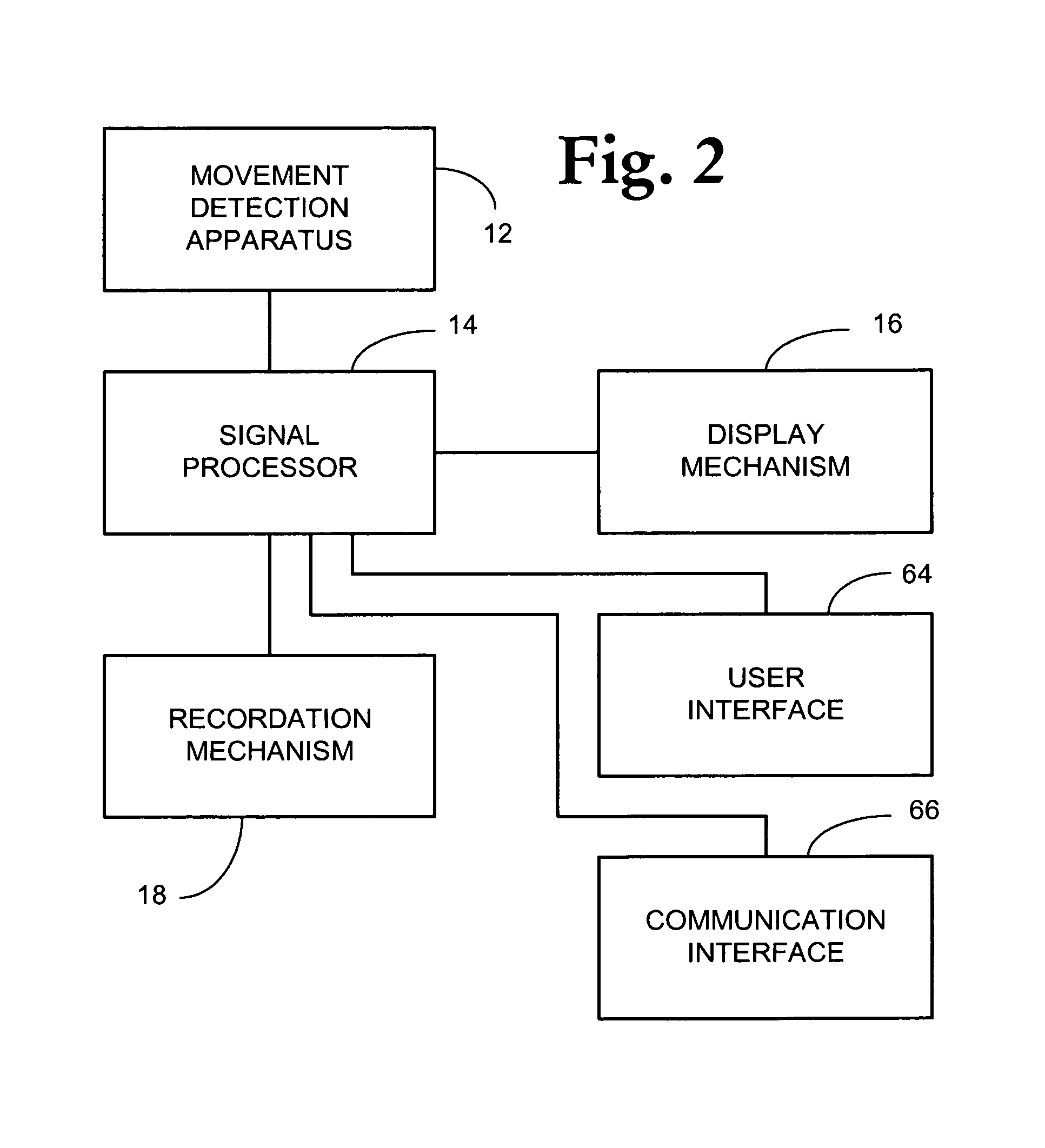Craniosynostosis detection system
- Summary
- Abstract
- Description
- Claims
- Application Information
AI Technical Summary
Benefits of technology
Problems solved by technology
Method used
Image
Examples
Embodiment Construction
[0026]With reference now to the drawings, and in particular to FIGS. 1 through 10 thereof, a new craniosynostosis detection system embodying the principles and concepts of the disclosed subject matter will be described.
[0027]As a matter of background and clarity for the following description, and referring to FIGS. 3 and 4, the head 1 of the infant patient has a skull 2 formed of a plurality of relatively flat bones 4 with sutures 5 therebetween. The sutures 5 are characterized by gaps in which fibrous connective tissue 6 is located and joins the spaced bones 4. The fibrous connective tissue 6 extends along the sutures 5 between the bones 4. The brain 7 of the patient is located on the skull 2. The scalp 8 of the patient's head overlies the bones 4 of the skull 2 as well as the fibrous connective tissue 6 in the sutures 5. The scalp 8 has an outer surface 9, and the patient may have hair extending from the outer surface 9.
[0028]The craniosynostosis detection system 10 may comprise a...
PUM
 Login to View More
Login to View More Abstract
Description
Claims
Application Information
 Login to View More
Login to View More - R&D
- Intellectual Property
- Life Sciences
- Materials
- Tech Scout
- Unparalleled Data Quality
- Higher Quality Content
- 60% Fewer Hallucinations
Browse by: Latest US Patents, China's latest patents, Technical Efficacy Thesaurus, Application Domain, Technology Topic, Popular Technical Reports.
© 2025 PatSnap. All rights reserved.Legal|Privacy policy|Modern Slavery Act Transparency Statement|Sitemap|About US| Contact US: help@patsnap.com



